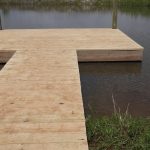Dredging a pond is a crucial maintenance task to keep it clean and healthy. Here is a step-by-step guide on how you can dredge a pond yourself without the need for professional help.
1. Assess the Pond
Examine the pond to determine the depth and extent of the sediment buildup. Identify areas that need dredging.
2. Gather the Necessary Tools
Ensure you have the essential tools such as a pond pump, shovel, rake, and silt curtain to effectively dredge the pond.
3. Drain the Pond
Use the pond pump to drain the water from the pond, exposing the sediment at the bottom for easier removal.
4. Remove Debris and Vegetation
Before dredging, clear the pond of any debris, rocks, or vegetation that may obstruct the dredging process.
5. Start Dredging
Using a shovel or dredging tool, carefully remove the sediment from the bottom of the pond, working methodically to cover the entire area.
6. Dispose of the Sediment
Dispose of the dredged sediment in an appropriate manner, away from the pond to prevent it from flowing back into the water.

Credit: commons.wikimedia.org
7. Install a Silt Curtain
After dredging, install a silt curtain around the pond to prevent sediment runoff and to protect the water quality.
8. Refill the Pond
Once the dredging is complete, refill the pond with fresh water, ensuring the water quality is maintained.
9. Monitor the Pond
Regularly monitor the pond for any signs of sediment buildup and perform minor dredging as needed to prevent further issues.

Credit: www.livingwateraeration.com
Benefits of Dredging a Pond Yourself
- Cost-effective solution for pond maintenance
- Allows for personalized attention to problem areas
- Enhances the overall health of the pond ecosystem
- Increases the aesthetic appeal of the pond
Conclusion
Dredging a pond yourself is a rewarding task that can improve the health and appearance of your pond. By following these steps and regularly maintaining your pond, you can enjoy a clean and beautiful water feature for years to come.





